Resource Centers
Iwokrama
International Centre for Rain Forest
Conservation and Development
Surama - a village just to
the southwest of the Iwokrama reserve -
has a mixed population of Makushi and
Arawak peoples who manage the diverse
vegetation of the region’s forest
and savanna interface. Here, forest
islands dot tropical savannah, while the
forest proper stretches towards
Iwokrama’s field station at
Kurupukari. Our aim, with the help of
Iwokrama’s indefatigable staff, is
to investigate the vegetation management
techniques employed locally, with a view
to improving our understanding of what
constitutes ‘sustainable forest
management’. /CC.
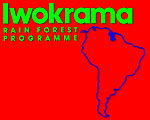 |
The Iwokrama International
Centre for Rain Forest
Conservation and Development, in
Guyana, was initiated to
demonstrate to the global
community that tropical rain
forests can provide sustainable
economic, environmental and
social benefits without
destroying the biological
diversity contained within it.
The Centre manages a pristine
tropical rain forest of 360,000
ha (almost one million acres) in
central Guyana, which the
Government of Guyana allocated
for this purpose. |
Iwokrama seeks to
achieve the following strategic
objectives: (1) demonstrate that tropical
forest resources can be both conserved
and used to generate socio-economic
benefits for the people of Guyana; (2)
research, develop and disseminate
techniques and methods for the
conservation of biological diversity and
the sustainable management of the
multiple resources of the tropical rain
forest, for the benefit of Guyana and the
wider world community; (3) preserve and
more widely apply the knowledge,
innovations and practices of local
Amerindian communities that contribute to
conservation and sustainable utilization
of biological diversity, and to ensure
that the benefits arising from the
utilization of such knowledge,
innovations and practices are equitably
shared with local Amerindian communities;
(4) promote effective links with and
among relevant research, extension,
educational and information
organizations, as well as with the
Amerindians, the private sector, and the
policy community; and (5) conduct
training in order to improve skills for
sustainable forest management and the
conservation of biological diversity, and
to organize and support symposia and
seminars for the exchange and
dissemination of ideas and information
related to these issues.
In addition to institutional building
activities, researchers are carrying out
a project on ‘Amerindian Communities
and the Sustainable Utilisation of the
Biological Resources of the Iwokrama
Area’. This project is documenting
the biological resources used by local
communities and will address the problem
of ensuring adequate rewards for
Amerindian indigenous knowledge. Iwokrama
makes available the facilities of a field
station located near Kurupukari on the
left bank of the Essequibo River.
Interested institutions or individuals
are invited to send a profile of their
proposed research to the Iwokrama Centre
‘Cultural affirmation and
confidence, learning the usefulness,
the harm as well as the sacredness of
plants, animals, traditions, beliefs
and the pride and joy in naming these
through rediscovering the richness of
an age old language. These are all
aims of one of Iwokrama’s most
human-centred projects – the
Makushi Women’s
Ethnobotany/Ethnomedicine project.The
project, conducted by Janette Forte
of the Amerindian Research Unit of
the University of Guyana, is funded
by Iwokrama. Participants were
selected by their respective
communities and eight of these
completed the community research
assignments. The project started in
May 1995 with an initial training
course and was continued in eight
subsequent workshops, each of a
week’s duration, with each of
the communities being host to one of
the sessions ...The trainees
researched over 70% of the farms
within each of their communities.
Both the quantity and quality of the
information gathered is impressive.
Collectively, the group has pressed
over 100 specimens of medicinal and
non-medicinal plants; documented 125
cultivars or varieties of bitter
cassava; recorded 120 species of
fishes; gathered and named 30 kinds
of wild fruits; identified 184
species of birds and 60 species of
wild animals. This process involved
widespread participation from
community members and especially drew
on the reservoir of knowledge held by
the elders.’
Anonymous.
1996. Women and biodiversity research
project.
Iwokrama Bulletin, April.
CONTACT
David Cassells, Director-General,
Iwokrama International Centre for
Rain Forest Conservation and
Development,
c/o Guyana Natural Resources Agency,
PO Box 1074, Georgetown, Guyana;
Tel. +592.2.51504, Fax +592.2.59199
or 71211,
E-mail iwokrama@guyana.net.gy
Website http://www.idrc.ca/iwokrama
Renald
Lafond, Senior Program Officer,
International Development Research
Centre (IDRC), 250 Albert Street, PO
Box 8500, Ottawa, Ontario K1G 3H9,
Canada;
Tel. +1.613.2366163 ext. 2414,Fax
1.613.5677749,
E-mail rlafond@idrc.ca
 Guyana is a small,
sparsely populated country
located in the northern tip of
South America, but with
historical, linguistic and
geopolitical ties firmly rooted
in the Caribbean. Guyana is a small,
sparsely populated country
located in the northern tip of
South America, but with
historical, linguistic and
geopolitical ties firmly rooted
in the Caribbean. |
BACK
CAB
International
CAB International (CABI) is an
international, intergovernmental
organization established in 1928. It is
owned by its member governments, which
currently number 40. CABI is dedicated to
improving human welfare world-wide
through the dissemination, application
and generation of scientific knowledge in
support of sustainable development, with
emphasis on agriculture, forestry, human
health and the management of natural
resources, and with particular attention
to the needs of developing countries. The
organization is largely self-supporting,
through the sales of its products and
services.
CABI operates four scientific
institutes that conduct basic and applied
research, and also publish a wide range
of scientific material. Titles of their
abstract journals include Review of
Aromatic and Medicinal Plants,
Agroforestry, Apiculture, Forest
Products, Plant Genetic Resources and
Rural Development. All information from
the abstract journals has been collated
in a database, CAB ABSTRACTS, which is
available through commercial database
vendors, on CD-ROM, floppy disc and in
other formats. CABI also produces a
number of specialty CD-ROMs. AGECONCD
covers literature on economic and social
aspects of agriculture, forestry, food
and Third World rural development, while
TREECD is a comprehensive source of
information on forestry, agroforestry and
forest products. CABI’s wide range
of books includes titles on biotechnology
and plant breeding, and ecology and the
environment. Of particular interest to
ethnobotanists is Collecting Plant
Genetic Diversity: Technical Guidelines,
which was edited by L. Guarino, R. Rao
& R. Reid, and published in May 1995.
For further
information contact CAB International at
the address nearest to you:
- Headquarters:
Wallingford, Oxon OX10 8DE, UK;
Tel+44.1491.832111, Fax
+44.1491.833508, E-mail cabi@cabi.org
- North
America: 845 North Park Avenue,
Tucson, Arizona 85719, USA;
Tel.+1.800.5284841 or
520.6217897, Fax +1.520.6213816,
E-mail cabi-nao@cabi.org
- Asia: PO
Box 11872, 50760 Kuala Lumpur,
Malaysia; Tel+60.3.2552922, Fax
+60.3.2551888, E-mail cabi-aro@cabi.org
- Caribbean:
Gordon Street, Curepe, Trinidad
& Tobago; Tel+1.809.6624173,
Fax +1.809.6632859, E-mail cabi-cro@cabi-org
- Africa: PO
Box 76520, Nairobi, Kenya;
Tel.+254.2.747340 or 747337,
Fax+254.2.747340, E-mail cabi-roaf@cabi.org
BACK
Center
for Tropical Forest Science
A complementary program to
that of CTFS is the Smithsonian Man and
the Biosphere (MAB) program, which
coordinates a network of one hectare
plots for biodiversity monitoring at many
sites in the tropics. The aim of the
Smithonsian MAB program is to gain
baseline data for a rapid index of
biodiversity over a wide range of sites
scattered around the globe. /ALH
The Center for Tropical Forest Science
(CTFS) is a program within the
Smithsonian Tropical Research Institute
that brings together a voluntary network
of natural and social scientists and
institutions from around the world. The
mission of the Center is to promote and
coordinate long-term biological and
socio-economic research within tropical
forests and forest dependent communities.
Furthermore, it aims to translate this
information into results relevant to
forest management, conservation and
natural resource policies.
To achieve these objectives,
scientists associated with CTFS work with
collaborators in forestry departments,
universities and NGOs to develop a
network of long-term forest research
programs. The primary involvement of CTFS
is to coordinate and standardize research
at different sites, through workshops,
conferences, production of manuals, and
exchange of personnel. Technical
assistance and training are also
provided. Collaborative research programs
have been established in Cameroon,
Colombia, Democratic Republic of Congo,
Ecuador, India, Malaysia, Panama,
Philippines, Puerto Rico, Singapore, Sri
Lanka and Thailand. A research tool
shared by all these research sites is the
Forest Dynamics Plot. This approach
includes setting up large permanent plots
(usually about 50 hectares) situated in
natural forests, in which all trees with
a diameter of one centimeter or greater
at breast height are mapped and
monitored.
CTFS now has almost two and a half
million trees permanently tagged,
providing data on more than 3000 species
of tropical trees. CTFS has two main foci
for its research. The Tropical Forest
Ecology Initiative aims to improve
understanding of how tropical forests
function. It includes investigations of
tree phenology and demography,
reproductive biology, plant genetics,
animal ecology, soils and climate. The
Sustainable Forestry Initiative aims to
combine the silvicultural, socio-economic
and ecological research conducted within
the CTFS program. This information will
be used to better inform policy makers of
the economic and social values of
tropical forests and how they can be
sustainably managed.
‘Since 1992, the Center
for Tropical Forest Science has
overseen a community-based
reforestation project entitled
“The Potential of Native Forest
Species on Degraded Soils in the
Tropics”. … We chose a 2-ha
study site adjacent to the Barro
Colorado Nature Monument, near the
town of Las Pavas [Panama]. Through
extensive meetings and other
collaborations with the scientific
and local-farming communities, we
selected tree species based on the
following criteria: first, species
known to have moderate to high growth
rates; second, species identified by
local farmers in ethnobotanic
interviews as useful for construction
or firewood; and third, species of
significant ecological importance.
… During a period of two years,
240 plots were established on
degraded land to study 17 native
species. … Working together,
farmers and scientists shared the
daily routines of transplanting,
weeding, and plot demarcations. Over
80 farmers, both male and female,
from more than eight communities near
BCNM participated in nursery and
plantation management. Through this
process, farmers have learned that
the forested land is a source of
opportunity not only for agriculture
and cattle farming, but also for
forestry projects.’
Morales,
J.E. 1995. Inside CTFS 2.
CONTACT
Elizabeth Losos, Director,
Center for Tropical Forest Science,
Smithsonian Tropical Research
Institute,
900 Jefferson Drive, Suite 2207,
Washington, DC 20560, USA;
Tel. +1.202.6338095, Fax
+1.202.7862819,
E-mail strfdp02@sivm.si.edu
BACK
Centro
Agronómico Tropical de Investigación y
Enseñanza
Since the 1980s, CATIE has
broadened its research program to include
projects on forest conservation and
extraction of NTFPs, with a special focus
on medicinal plants. / GJM
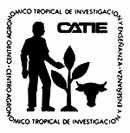 |
The Centro Agronómico
Tropical de Investigación y
Enseñanza, CATIE (Tropical
Agricultural Research and
Training Center) was founded in
1973. This non-profit,
international institute carries
out research and education in the
fields of sustainable agriculture
and management of natural
resources. |
Its geographic focus is
the American tropics, with emphasis on
Central America. Member countries of
CATIE are Belize, Colombia, Costa Rica,
Dominican Republic, Ecuador, El Salvador,
Guatemala, Honduras, Mexico, Nicaragua,
Panama and Venezuela. The Center
organizes short training courses,
in-service training, strategic courses
and regional meetings.
| Of particular interest is the
project ‘Conservation for
Sustainable Development in
Central America‘, known as
OLAFO, which began in 1989. It
seeks to promote rural
development through the
sustainable use of natural
resources. In Costa Rica,
Guatemala, Honduras, Nicaragua
and Panama the project has been
working with local communities to
investigate diversified forest
management, utilizing timber and
non-timber forest products.
Research and development actions
are undertaken to improve farming
and extractive practices. To
ensure the sustainability of this
approach, the project has been
working on linking governmental
and non-governmental institutions
to local initiatives. |
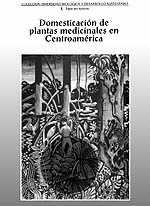 |
‘Quassia amara
is a small tree whose wood, bark, and
leaves contain quassina compounds
which in small doses possess
medicinal characteristics, but in its
same form works as a pesticide. On a
local and national level Quassia
amara is sold as a medicinal aid
for stomach ailments. The raw
material was sold internationally
before the Second World War for use
as an insecticide, but with the
creation of effective synthetic
substitutes, interest dwindled in the
late 1940s. Given changing attitudes
toward pesticides and a burgeoning
‘green’ market, an organic
product was deemed to have potential
and so it is being reintroduced at
the national and international
level.’
Kent, J. and L.
Bianco. 1994. Market-related
Constraints to Non-timber Forest
Product Development in Central
America: Experiences from the
CATIE/Olafo Project. Manuscript.
CONTACT
Tania Ammour,
Project Leader, OLAFO Project,
PO Box 99, 7170 Turrialba, Costa
Rica;
Tel. +506.5566882 or 5560301, Fax
+506.5568417,
E-mail olafo@catie.ac.cr or tammour@catie.ac.cr
Website http://www.catie.ac.cr
BACK
Centre
for Indigenous Knowledge for Agriculture
and Rural Development
Dennis Michael Warren, the
founder of CIKARD and its director for
ten years, passed away in December 1997
at his home in Ara, Nigeria. He was a
guiding light not only for CIKARD, but
also for all the indigenous knowledge
resource centers with which it is linked.
Norma Wolff and Mike Whiteford and other
colleagues at CIKARD are ensuring that
his inspiration and spirit live on. /GJM
The Centre for Indigenous Knowledge
for Agriculture and Rural Development
(CIKARD) was established in 1987 at Iowa
State University. The Centre’s goal
is to record indigenous knowledge (IK)
and to make it available to local
communities, development professionals
and scientists. Through these means,
CIKARD aims to facilitate participatory
and sustainable approaches to
development. Its activities are focused
in four areas: indigenous innovations,
knowledge systems (e.g. classification
systems), decision making systems (e.g.
which crops to grow), and organizations.
CIKARD’s activities and current
programs are based on the following
objectives:
- collecting, documenting and
disseminating information on
indigenous knowledge of
agriculture, natural resource
management and rural development;
- developing cost-effective and
reliable methodologies for
recording this knowledge;
- conducting training courses and
producing materials on IK for
extension and other development
workers;
- preparing teaching modules based
on indigenous knowledge case
studies for use in primary,
secondary and tertiary
educational institutions;
- facilitating interdisciplinary
research
- supporting the activities of
regional and national IK resource
centers; and
- formulating agricultural and
natural resource management
policies and designing technical
assistance programs based on IK.
The Centre networks with more than
2500 individuals and institutions, and
has formal links with 34 IK resource
centers around the world. It is also
involved in production of the Indigenous
Knowledge and Development Monitor
(IK&DM; see PPH 1). CIKARD’s
home page includes a wealth of resources,
including a wide range of articles on IK
and a keyword search facility for
abstracts and citations of nearly 4500
papers.
The administration of CIKARD is
currently being handled by the Acting
Director, Mike Whiteford, Department of
Anthropology; the Associate Director for
Research, Robert Mazur, Department of
Sociology; and the Associate Director for
Training, Norma Wolff, Department of
Anthropology; all at Iowa State
University. CIKARD has an International
Advisory Board comprising the directors
of indigenous knowledge resource centers
from around the world.
‘The majority of
small-scale farmers in developing
countries live in conditions of high
variability, uncertainty, and complex
interactions. For them, indigenous
innovations, which are generated
mainly through experimentation,
represent one of the key elements in
their survival. However, the capacity
of these farmers to experiment is a
neglected resource. As a rule, it
goes unrecognized and unsupported,
without any link to the formal
agricultural research systems. There
are studies that show that knowledge
generation by farmers often draws on
both scientific and local methods of
experimentation. Thus it is important
that methodologies and approaches are
developed together with farmers, in a
collaborative and interactive way.
This will help them to enhance their
own experimentation methods, and
strengthen the communication channels
between these two parallel systems of
knowledge generation.’
Quiroz, C. 1996.
Local knowledge systems contribute to
sustainable development. Indigenous
Knowledge and Development Monitor
4(1): 3-4.
CONTACT
Norma
Wolff, Associate Director for
Training,
CIKARD, 318 Curtiss Hall, Iowa State
University, Ames, Iowa 50011, USA;
Tel. +1.515.2940938, Fax
+1.515.2946058,
E-mail nhwolff@iastate.edu
Website http://www.iitap.iastate.edu/cikard/CIKIntro.htm
BACK
East-West
Center
Rajindra Puri, visiting
fellow at the East-West Center, has been
carrying out innovative research on
ethnobiology and historical ecology in
East Kalimantan, Indonesia. He
participated in two sessions of the
People and Plants in Southeast Asia
Certificate Training Course in Applied
Ethnobotany, held in the Philippines and
Malaysia in 1998. / GJM

The East-West Center was established
in 1960 to foster mutual understanding
and cooperation among the governments and
peoples of the Asia-Pacific region,
including the United States. Principal
funding is provided by the US government.
The Center’s research activities are
divided into four programs, of which the
Program on Environment was established in
1977. It focuses on improving management
of renewable resources and the
environment in the Asia-Pacific region.
In particular, it seeks to understand how
environmental factors influence human
welfare, how human activities are
changing the environment, how such
environmental change can be controlled or
mitigated, and how societies can best
respond to unavoidable changes. Results
of the research are published as books,
articles and occasional working papers.
Two areas of particular interest are
biodiversity conservation and renewable
resources management. In the former area,
current work includes developing methods
for rapid and remote assessment of
biodiversity maintenance and
investigating feedback linkages between
biodiversity and society. Within the
field of renewable resources management,
major issues being addressed include
joint community/state management of
forests, and the role of spatial
information technology (maps, aerial
photographs, satellite images, geographic
information systems) for understanding
human/land relationships.A new initiative
on ‘Vulnerable Ecosystems and Their
People’ includes projects on
research, training and dialogue for
sustainable development in montane
mainland Southeast Asia; coastal resource
assessment, management and
rehabilitation; and valuing natural
resource in Hawai’i and the Pacific
Islands.
‘The Penan of Long
Peliran have had opportunity to
travel throughout the area and, being
in many cases collectors of forest
products, have a very good
understanding of the local and
regional distribution of many of
these palm species. Whether this
knowledge corresponds to actual
distributions remains to be seen. In
terms of local distribution, Penan
recognize differences in the
palm’s preferred habitat and
clumping …Eugeissona
grows in large, near-monospecific
groves on the top of many dry ridges
surrounding the villages of the Bahau
and Lurah, but can also be found in
both primary and secondary forests up
to 1000 masl. Eugeissona is
said to be particularly dense along
the steep banks of the Pujungan
River, the Lurah River and the Upper
Bahau River. Arenga
undulatifolia is more evenly
distributed, and occurs in mixed
species clumps in secondary forests
along stream banks ...What is most
interesting is that Penan recognize
areas and habitats where human
activities are in part responsible
for these observed distributions, as
is the case for Arenga
undulatifolia and Caryota no.
It is very likely that Penan
harvesting practices have served to
enhance the abundance of all palms,
especially increasing the size of Eugeissona
groves …
Puri, R. 1997.
Penan Benalui knowledge and use of
tree palms. Pages 195 – 226 in
K.W. Sorensen and B. Morris, editors,
People and Plants of Kayan Mentarang.
London, World Wide Fund for Nature
Indonesia Programme.
CONTACT
Jefferson M.
Fox, Director, Program on
Environment,
East-West Center, 1601 East-West
Road,
Honolulu, Hawaii 96848, USA;
Tel. +1.808.9447266, Fax
+1.808.9447298,
E-mail env@ewc.hawaii.edu
Website http://www.ewc.hawaii.edu/env/env00001.htm
BACK
Caribbean
Natural Resources Institute
Although many NGOs carry
out innovative development and
conservation projects, few go the extra
step of analyzing their experiences and
sharing the lessons they have learned.
CANARI has embarked on a fruitful project
to document case studies of community
participation in Caribbean forest
management, including experiences in
Dominica, Grenada, St. Lucia and
Trinidad. The first in the series, dated
April 1998, describes collaborative
management of the Mankòtè mangrove in
St. Lucia. / GJM
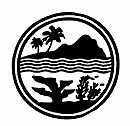 |
The Caribbean Natural
Resources Institute (CANARI) is a
regional non-governmental
organization that has been
working for over 15 years on
conservation, environment and
sustainable development in the
Caribbean islands. Its goal is to
foster the development and
adoption of policies and programs
that support increased
participation of communities and
user groups in natural resource
management, and that create
effective partnerships between
governments and institutions in
civil society. |
Through its program
activities, CANARI aims to encourage
collaboration – through the sharing
of technologies, ideas and experience
– among all the countries of the
region. Applied research, analysis and
advocacy are the tools by which it seeks
to reach these goals.
CANARI’s research is carried out
through a series of field projects in
which different management approaches and
technologies are tested. In the 1996-97
program, studies conducted in St. Lucia
included: participatory planning and
management on the southeast coast;
community organization and conflict
resolution; and collaborative management
of the Mankòtè mangrove. As well as
developing its own research, CANARI also
works with other institutions to extract
lessons from their fieldwork. The results
and experiences are used to identify the
skills and techniques needed to implement
effective collaborative management.
Recent work has focused on developing and
refining procedures and skills in coral
reef monitoring, sustainable mangrove
harvesting and participatory planning
processes.
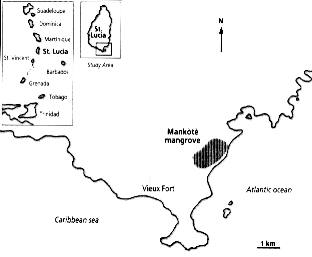
Through its advocacy work, CANARI
seeks to build support for the use of
participatory approaches in natural
resource management. Its activities
include organizing meetings and
conferences, and producing publications
that include guidelines on policies and
techniques for participatory and
collaborative natural resource
management. English, Spanish and French
versions of the Caribbean Park and
Protected Area Bulletin are produced
occasionally. CANARI collaborates with
the Panos Institute on publications that
document case studies of community
participation in natural resource
management. CANARI also organizes
workshops, short courses, study tours and
training materials, providing people from
the region with the opportunity to share
experiences and seek solutions to common
problems.
‘The Mankòtè mangrove
was once covered with well developed
trees. The area was part of a US
military base during World War Two,
and little or no exploitation took
place. After the base closed down in
1960, the area became public land,
and was used for a variety of
purposes including seasonal fishing,
bird hunting, crabbing, therapeutic
bathing and as a source of wood for
charcoal production and for
construction. The area has also been
used as a waste disposal site for
local households and businesses.
Decades of uncontrolled use and
indiscriminate waste dumping has left
Mankòtè in a highly degraded
condition.Studies undertaken since
1981 documented, nevertheless, that
the area was being used extensively
by local people for a variety of
potentially sustainable purposes.
Unlike much of the adjacent public
lands, use of the mangrove appeared
to be regulated to some extent by the
community of users, particularly the
charcoal producers.’
Smith, A.H. and F.
Berkes. 1993. Community-based use of
mangrove resources in St. Lucia. International
Journal of Environmental Studies
43:123-131.
CONTACT
Yves Renard,
Executive Director,
CANARI, Clarke Street, Vieux Fort,
St. Lucia;
Tel. +1.758.4546060, Fax
+1.758.4545188,
E-mail canari@isis.org.lc
CANARI,
1113 Strand Street, Christiansted,
St. Croix, Virgin Islands 00820, USA;
Tel. +1.340.7739854, Fax
+1.340.7735770,
E-mail ac636@virgin.usvi.net
BACK
African
Wildlife Foundation
AWF has been at the
forefront of developing approaches to
community-based conservation in East
Africa. In doing so, they have not shied
away from difficult cases of land-use
conflicts between local communities and
conservation areas. / ABC
The African Wildlife Foundation (AWF)
is an international NGO, founded in 1961.
Its mission is to promote the protection
and sound management of Africa’s
natural resources, and to increase the
contribution of these to local and
national economies. It seeks to achieve
this by building the capacity of
individuals and institutions in the
continent to manage their resources. AWF
is implementing a range of conservation
projects within the continent, focusing
mainly in East Africa.
Since the late 1980s, AWF has
developed the field of community
conservation through the program
‘Protected Areas: Neighbours as
Partners’. This program is working
in collaboration with conservation
authorities in Kenya (Tsavo/Amboseli,
Laikipia/Samburu and the coast), Tanzania
(in all the national parks) and Uganda
(Mburo and Bwindi).
AWF’s work in Tanzania has led to
the formation of the Tanzania National
Parks Community Conservation Service, and
in Kenya to the establishment of the
Community Wildlife Service within the
Kenya Wildlife Service (KWS). In Uganda,
AWF is supporting Uganda National Parks
to institutionalize community
conservation.
In all three countries AWF works with
its conservation authority partners to
help in the definition of community
conservation policy and practice. This
has been with relation to training,
benefit sharing and creating conservation
related business options, and also the
process of community conservation
extension.
In Tanzania this process has evolved
further with the formation of a separate
project, the ‘Community Conservation
Service Centre’, as a resource to
provide relevant community conservation
skills and resources to a wide range of
stakeholders.
‘An inherent component of
community conservation is redressing
the traditionally inequitable
distribution of the costs and
benefits of conservation. People
living on the periphery of protected
areas incurred costs of restrictions
on resource use, alienation from land
and damage to life and property,
while deriving little benefit from
the protected areas. Governments
collected revenues generated from
wildlife resources and foreign
tourists enjoyed the aesthetic and
recreational benefits of wildlife.
Community conservation encourages the
sharing of the benefits of
conservation with local people, and
various strategies have been used,
including the distribution of revenue
gained from tourism to local people,
permitting wildlife utilization by
giving use rights to local people,
and permitting the collection of
resources from protected areas …
The implementation of community
conservation [in Kenya] has proved to
be complex. A history of
preservationist and militaristic
conservation authorities makes
partnerships with communities more
difficult, and the benefits of
conservation are less clear to
communities than the benefits of
economic activities such as
cultivation and livestock farming.
The integration of conservation and
economic development objectives is
also proving challenging.
Nevertheless, in certain conditions,
conservation is a viable and
competitive land use option, as
demonstrated in the drier, pastoral
areas of Eastern Africa.’
Barrow, E., K.
Kangwana and D. Berger. 1992. The
Role of the African Wildlife
Foundation in the Evolution of
Community Conservation Practise and
Policy in Kenya. Nairobi, ACTS.
CONTACT
Mark Stanley-Price, Director, African
Wildlife Foundation,
P.O. Box 48177, Nairobi, Kenya;
Tel. +254.2.710367, Fax
+254.2.710372,
E-mail awfwash@igc.apc.org
Website www.awf.org/
BACK
Jatun
Sacha Foundation
David Neill, who began his
career in Ecuador as a plant collector
for the Missouri Botanical Garden, has
worked hard with Ecuadorian colleagues to
make Jatun Sacha one of the largest
non-profit conservation organizations in
this biologically-diverse country. / GJM
The Jatun Sacha Foundation (Fundación
Jatun Sacha) is a non-profit
organization, founded in 1986 and
officially recognized by the government
of Ecuador in 1989. The Foundation owns
and manages three biological field
stations, through which it promotes
biological conservation, research,
education, community extension and
ecotourism in Ecuador. The Jatun Sacha
Biological Station (named the Seco
International Children’s Rainforest
in 1993) protects about 2000 hectares of
tropical wet forest in Amazonian Ecuador.
The Guandera Biological Station,
established in 1994, comprises 1000
hectares of high altitude inter-Andean
forest. The Bilsa Biological Station
protects some 3000 hectares of some of
the last remaining tropical wet forest in
western Ecuador
.One of the programs at the Jatun
Sacha Biological Station is the
development of the Amazon Plant
Conservation Center, which oversees the
establishment of a living collection of
economically important plants from the
region. Native medicinal plants and fruit
and nut trees are cultivated within the
Center’s Ishpingo Botanical Garden.
Soon after the opening of the Garden in
1996, a workshop on the useful plants of
Amazonian Ecuador was held. The
participants were university botany
students and members of local indigenous
organizations. Similar workshops are
planned in coming years.
Jatun Sacha is also conducting
silvicultural research. Plantation trials
have been set up for selected native tree
species that yield timber, latex, resins,
fruits and other products. The staff
members of Jatun Sacha are developing an
agroforestry extension, which is designed
to promote sustainable agricultural
practices among local farmers. The
program promotes the use of
multiple-cropping systems and the
planting of trees for timber, fruits and
other locally marketable products.
‘ The Quichua peoples,
through their continual trial and
error investigation of traditional
medicine, have found excellent
curative properties in [huasca
shia, Mikania cordifolia (Asteraceae)].
The root is cleaned and chewed on a
sore tooth, and it produces an
anesthetic effect. Also, the plant
can be made into a mouthwash to
prevent dental caries, and a
decoction of the root is used to
treat stomach cramps and
diarrhea.’
Alvarado, A.
(Translated by D. Kiefer). 1996.
Medicinal Plants of the Ishpingo
Botanical Garden, Amazon Plant
Conservation Center (CCPA), Jatun
Sacha Biological Station. Quito,
Jatun Sacha Foundation.
CONTACT
David Neill,
Jatun Sacha Foundation,
Casilla 17-12-867, Avenida Rio Coca
1734, Quito, Ecuador;
Tel./Fax +593.2.441592,
E-mail neill@pi.pro.ec
Website http://www.jatunsacha.org/
 Ishpingo
is the Quichua word for the
native Ecuadorian
‘cinnamon’ tree Ocotea
quixos (Lauraceae), found
only in a small region of
Amazonian Ecuador. It has been
used locally as a spice and
flavoring agent since
pre-European times. Ishpingo
is the Quichua word for the
native Ecuadorian
‘cinnamon’ tree Ocotea
quixos (Lauraceae), found
only in a small region of
Amazonian Ecuador. It has been
used locally as a spice and
flavoring agent since
pre-European times. |
BACK
|